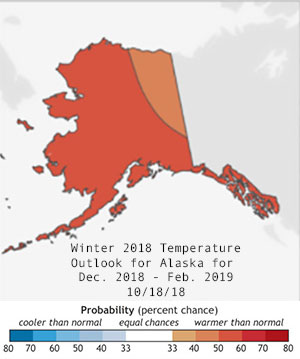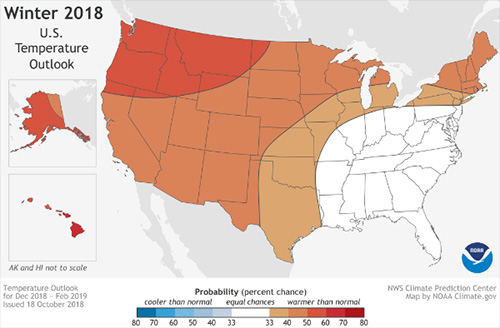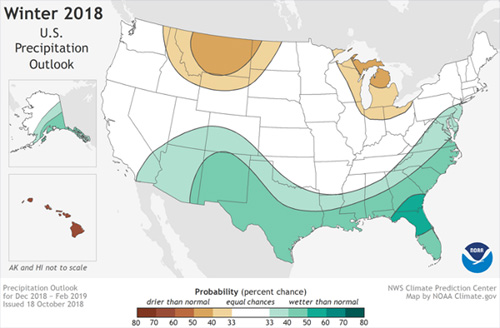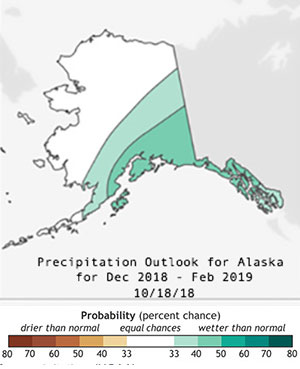
NOAA Winter Outlook favors warmer temperatures for much of Alaska & U.S.
October 18, 2018
Additionally, El Nino has a 70 to 75 percent chance of developing. “We expect El Nino to be in place in late fall to early winter,” said Mike Halpert, deputy director of NOAA’s Climate Prediction Center. “Although a weak El Nino is expected, it may still influence the winter season by bringing wetter conditions across the southern United States, and warmer, drier conditions to parts of the North.” El Nino is an ocean-atmosphere climate interaction that is linked to periodic warming in sea surface temperatures in the central and eastern equatorial Pacific. During the winter, typical El Nino conditions in the U.S. can include wetter-than-average precipitation in the South and drier conditions in parts of the North. Other climate patterns that can affect winter weather are challenging to predict on a seasonal time scale. The Arctic Oscillation influences the number of arctic air masses that penetrate into the South and could result in below-average temperatures in the eastern part of the U.S. The Madden-Julian Oscillation can contribute to heavy precipitation events along the West Coast - which could play a large role in shaping the upcoming winter, especially if El Nino is weak, as forecasters predict. The 2018 U.S. Winter Outlook (December through February) Temperature
Precipitation
Drought
NOAA’s seasonal outlooks give the likelihood that temperatures and precipitation will be above-, near- or below-average, and how drought conditions are expected to change, but the outlook does not project seasonal snowfall accumulations. Snow forecasts are generally not predictable more than a week in advance. Even during a warmer-than-average winter, periods of cold temperatures and snowfall are still likely to occur. NOAA’s Climate Prediction Center updates the three-month outlook each month. The next update will be available on Nov. 15. NOAA produces seasonal outlooks to help communities prepare for what is likely to come in the next few months and minimize weather's impacts on lives and livelihoods.
On the Web: Editing by Mary Kauffman, SitNews
Source of News:
|
|||||||



